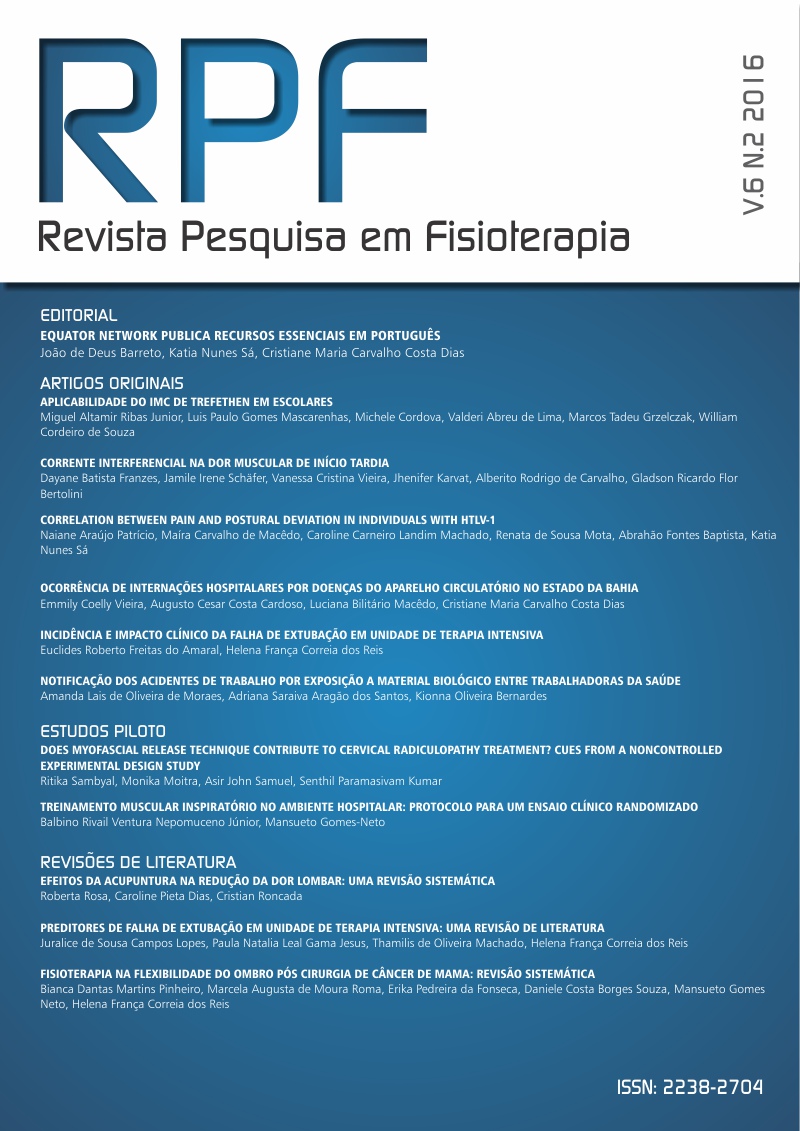INCIDENCE AND CLINICAL IMPACT OF EXTUBATION FAILURE IN PATIENTS ADMITTED TO THE INTENSIVE CARE UNIT
DOI:
https://doi.org/10.17267/2238-2704rpf.v6i2.808Keywords:
Mechanical ventilation, Ventilator weaning, Airway Extubation, Intensive Care UnitsAbstract
Objective: To establish the incidence and clinical impact of extubation failure in patients hospitalized in the intensive care unit. Methods: An observational, retrospective study conducted from July 2010 to December 2012, with patients extubated after it was determined that they could tolerate spontaneous breathing. The patients were divided into two groups: success and failure of extubation. Extubation failure was defined as reintubation within 48 hours after extubation. Results: The analysis comprised 116 patients, mean age 68.1 ±
16.2 years, 52.6 % males. The incidence of extubation was 32.8 %. The mean duration of mechanical ventilation was 4.6 days ± 2.7 days. Patients who had extubation failure tended to present worse clinical outcomes. The ICU mortality was, respectively, 57.9 % and 32.1 % in patients with failure and success of extubation (p = 0.007). Hospital mortality was more frequent in the group of extubation failure (71.1 % vs 39%, p < 0.001). A tracheostomy was significantly more necessary in patients who underwent failed extubation than in those
with successful extubation (34.2 % vs 12.8 %, p = 0.008). Patients who failed extubation more noninvasive ventilatory support (SVNI), 44 % vs. 9%; p <0.001. Conclusion: The incidence of extubation failure was greater than the value indicated by the literature. Increased mortality in ICU and hospital, greater need for tracheostomy and pulmonary complications were more often associated with patients who had extubation failure.



